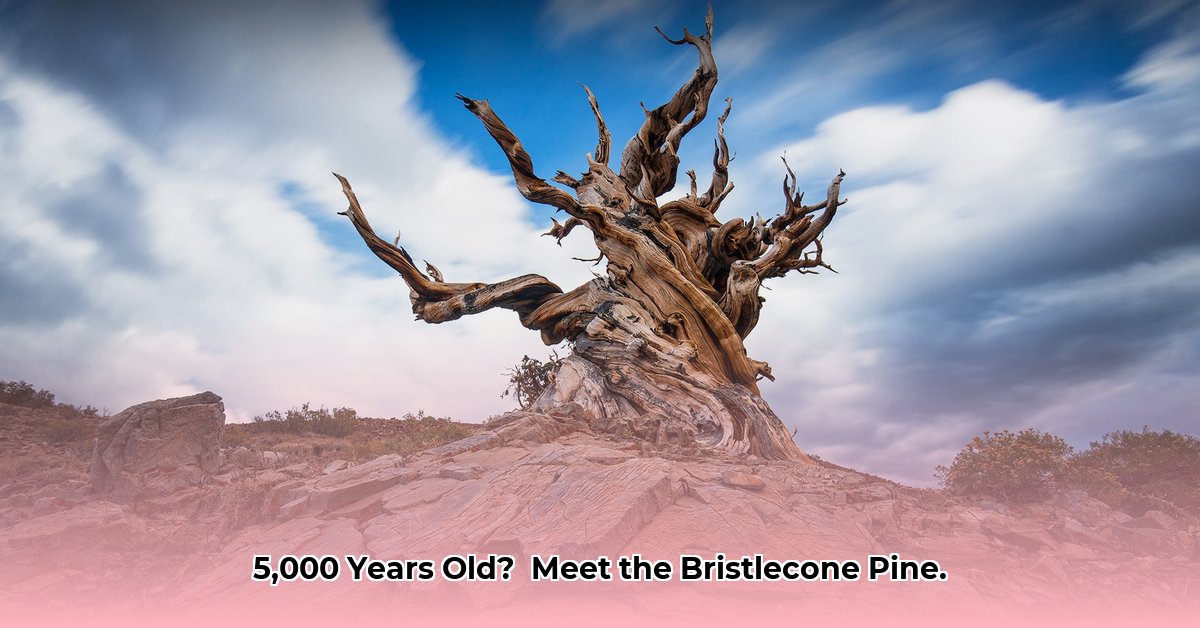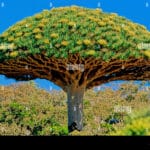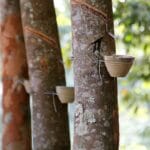Have you ever imagined a tree predating the Egyptian pyramids? Meet the bristlecone pine, a living testament to time that has thrived for millennia, witnessing the rise and fall of civilizations. These are not your typical trees. Bristlecone pines are marvels of resilience, mastering survival in some of Earth’s harshest environments. Join us as we explore their extraordinary world, uncovering the intricate methods scientists use to determine their remarkable ages (a task more complex than you might think!), the current threats they face, and the conservation efforts designed to protect these ancient monuments. Prepare to be amazed by their tenacity and the urgent mission to ensure their survival.
Unveiling the Ancient Secrets of Bristlecone Pines, High-Altitude Survivors
Ancient Guardians of Mountainous and Barren Landscapes
Picture a tree that has stood as a silent observer throughout history – witnessing the evolution of societies and the cyclical patterns of human advancement. This is the reality of the bristlecone pine, especially the Great Basin bristlecone pine (Pinus longaeva). Standing tall in the rugged mountains of the American West, they are among the Earth’s oldest living individual organisms. Imagine their sturdy, twisted forms reaching towards the sky, shaped by centuries of strong winds and heavy snow, their very existence a symbol of nature’s resilience. They exemplify endurance, quietly observing the passage of time. These long-lived trees have withstood ecological changes and adapted over millennia, some for more than 5,000 years.
Unlocking the Secrets of Time: Precise Age Determination
Determining the exact age of these ancient wonders is a complex process. Scientists use dendrochronology (tree-ring dating) to unlock their history, extracting core samples for examination. Getting a complete sample from a bristlecone that could be thousands of years old is a great challenge. This explains why age estimates can differ, even for the famous Methuselah. The detailed nature of this process means there could be errors, depending on the sample and how it’s tested. Tree ring dating gives us important information about past climate conditions and helps us compare different timelines to create longer histories.
Methuselah: A Symbol of Endurance and Ancient Forests
Methuselah, a bristlecone pine residing in California’s White Mountains, is considered the world’s oldest known non-clonal tree. Its precise location remains confidential to protect it from vandalism. Estimated to be around 4,850 years old, Methuselah showcases life’s incredible ability to endure and adapt in the face of adversity. It represents nature’s persistent spirit and offers a beacon of hope.
Thriving Against the Odds: Natural Adaptations
The bristlecone pine’s extraordinary lifespan isn’t just luck; it shows how well it has adapted to its harsh environment. These trees grow extremely slowly because there’s little water and growing seasons are short. This slow pace, surprisingly, slows down aging. Their wood is very dense and full of resin, which stops decay – a natural defense developed over thousands of years. But even these great adaptations don’t give them total protection. What environmental factors make these pines so resilient?
The Looming Shadow of Climate Change and Forest Health
While the bristlecone pines have survived many difficulties, climate change is a serious threat. Rising temperatures, long droughts, and outbreaks of bark beetles put their survival at risk. The danger affects not only trees like Methuselah but also the valuable ecological knowledge they give us about long-term climate patterns. These trees are like living climate records, and if they disappear, we would lose crucial information about our planet’s past. Can we take steps to protect them from these dangers?
Protecting the Ancients: Conservation Strategies
Protecting these ancient bristlecone pines needs a comprehensive plan. Managing wildfires carefully, as they are a natural part of their ecosystems, is essential because uncontrolled fires can ruin whole forests. It’s also important to keep an eye on the trees’ health and put in place plans to deal with climate change. These plans should protect bristlecone forests from beetles and help trees survive droughts. Making the public more aware of these precious wonders is also vital. The U.S. Forest Service actively works to manage bristlecone pine ecosystems to make sure they survive for a long time.
A Call to Action: The Future of Bristlecone Pine
Bristlecone pines are more than just old trees; they are living records full of centuries of environmental information. Their endurance is closely linked to the health of our planet, and their future depends on us. Protecting these amazing trees and ensuring they continue to survive is a responsibility we all share. These trees are living history and demonstrate life’s incredible ability to bounce back. What will we do to keep their legacy alive for future generations? If we act, their story will continue. Let’s allow these ancient guardians to watch over us for thousands of years to come.
How to Accurately Determine the Age of Ancient Bristlecone Pines
Key Takeaways:
- Bristlecone pines are famous for their long life, with some living for over 4,800 years.
- Dendrochronology, or tree-ring dating, is the main method to determine their age.
- The rings show the tough conditions these trees live in.
- These old trees tell us about past climates and environmental changes.
- Protecting these living records is crucial for learning about our planet’s history.
Imagine a tree that has witnessed thousands of years pass – empires rise and fall, and civilizations come and go. That’s the bristlecone pine, one of the oldest living things on Earth. But how do we know the age of these ancient trees? The question of how to accurately determine the age of ancient bristlecone pines has long fascinated scientists.
The Science of Ancient Wood: Dendrochronology
Dendrochronology, the study of tree rings, is the primary method for dating bristlecone pines. Each ring represents a year of growth. A wide ring indicates favorable conditions, while a narrow or indistinct ring signifies harsh years. This is particularly evident in bristlecone pines, which thrive in extreme environments. Their high-altitude, arid habitats leave a distinct mark on their wood, providing a detailed record of past conditions. What is the average annual growth rate for a bristlecone pine?
While counting rings works for younger trees, the ancient bristlecone pines present a unique challenge. Their wood is exceptionally dense and often fragmented. Many ancient bristlecone pines have lost their outer layers due to weathering and erosion, making ring counting exceptionally difficult.
Advanced Techniques for Age Determination
Scientists often employ advanced techniques to overcome these challenges:
-
Cross-dating: Researchers compare the ring patterns of multiple trees from the same area. Matching specific sequences of wide and narrow rings helps create a continuous timeline spanning centuries, even millennia. This method enables scientists to extend the timeline beyond the lifespan of individual trees.
-
Radiocarbon Dating: Radiocarbon dating can validate ages determined by ring counts, especially for very old trees or tree fragments. This method measures the amount of radioactive carbon (14C) remaining in wood samples. How accurately can radiocarbon dating determine the age of ancient specimens?
-
High-resolution imaging: Advanced imaging technologies provide detailed, non-destructive examinations of tree growth rings. Microscopic analysis can reveal subtle features that might otherwise be overlooked, thereby improving dating accuracy.
-
Statistical modeling: Statistical models, when used with dendrochronological data, significantly improve precision. By accounting for variability in ring width, these models can estimate age more accurately, especially in regions with irregular growth patterns.
The Challenges and Triumphs of Bristlecone Pine Dating
The great age and harsh environments in which bristlecone pines grow pose considerable challenges. The trees are often fragmented, making it impossible to count all the rings. Constant weathering further erodes the wood. Furthermore, collecting samples from these rare trees is carefully regulated to minimize potential damage. What ethical considerations are involved in analyzing bristlecone pines?
Despite these challenges, the information gleaned is invaluable. By understanding how to accurately determine the age of ancient bristlecone pines, scientists not only learn about individual tree lifespans but also unlock a wealth of information about past climates. This knowledge is essential for climate change research and provides insights into how life can persist in extreme environments.
Comparative Longevity Metrics of Bristlecone Pines Across Diverse Habitats
Key Takeaways:
- Bristlecone pines (Pinus longaeva) are exceptionally long-lived, with some individuals exceeding 5,000 years.
- Their longevity is attributed to adaptations to harsh, high-altitude environments.
- High genetic diversity contributes to their resilience.
- Climate change poses an increasing threat to their survival.
- Further research, particularly into their genetic makeup, is crucial to understanding their longevity.
- Protecting these ancient trees is an urgent priority.
Whispers from the Ancients: Decoding Bristlecone Pine Longevity
Imagine a tree that has witnessed millennia unfold – empires rise and fall, civilizations bloom and wither. That’s the reality of the bristlecone pine, Pinus longaeva, a living testament to the power of adaptation and the enduring strength of life. These ancient sentinels of the mountains hold within their gnarled wood the secrets to extraordinary longevity. But how do we measure this exceptional lifespan? And what does it tell us about these remarkable trees and their future?
Measuring the Millennia: Age Determination Techniques
Determining the age of a bristlecone pine involves more than a simple ring count. These trees often endure harsh environmental conditions—extreme cold, aridity, and high winds—that result in incomplete or indistinct growth rings. Scientists utilize a combination of techniques, including careful examination of cross-sections, radiocarbon dating, and advanced imaging, to estimate their age accurately. The difficulty in discerning year-to-year growth underscores the extraordinary environmental pressures they face and the challenge of comprehensive Comparative Longevity Metrics of Bristlecone Pines Across Diverse Habitats. How do environmental stresses visibly affect tree rings?
Environmental Factors Shaping Lifespans
The harsh conditions in which bristlecone pines flourish actually contribute to their exceptional longevity. Slow growth, resulting from limited water and nutrients, leads to dense, durable wood resistant to decay and insect attacks. At high altitudes, these trees are exposed to intense UV radiation, which, while detrimental, promotes natural selection, favoring individuals with robust genetic defenses. This deliberate growth is key to their resilience. However, these same factors make them vulnerable to climate change. What is the role of elevation in bristlecone pine survival rates?
Genetic Secrets: Polymorphism and Resilience
Recent research suggests that the remarkable longevity of bristlecone pines is linked to their high genetic diversity. High levels of genetic polymorphism—substantial variation within their genes—provide a broader range of adaptations to environmental stresses. This diversity acts as a buffer against disease, drought, and other threats. However, their genetic code remains largely unexplored. Comprehensive genomic sequencing is crucial to unlocking the secrets to their resilience. How does genetic diversity protect against ecological threats?
The Threat of a Changing Climate
Despite their resilience, bristlecone pines are vulnerable to the impacts of climate change. Increased frequency and intensity of droughts, coupled with bark beetle infestations, are devastating populations. Even these ancient organisms, seemingly impervious to time, struggle to cope with rapid environmental changes. Understanding how climate shifts affect different habitats and precisely measuring the impact on Comparative Longevity Metrics of Bristlecone Pines Across Diverse Habitats is crucial for developing effective conservation strategies. What identifiable signs of climate stress are visible in bristlecone pine populations?
Conservation and the Future of the Ancients
Protecting these ancient trees requires a multifaceted approach, including establishing protected areas, monitoring populations, and conducting research to understand their responses to climate change. Actively managing habitats by mitigating threats such as drought and encouraging seed dispersal is also necessary for long-term resilience. The bristlecone pine’s story is not just about the past but about the future of our planet—a testament to resilience and a stark warning about the vulnerability of even the oldest and hardiest life forms. How effective are seed dispersal programs in ensuring the long-term survival of bristlecone pines?
Genetic Adaptations Enhancing Bristlecone Pine Resilience to Arid Conditions
Key Takeaways:
- Bristlecone pines can live for over 5,000 years due to adaptations to dry conditions.
- Genetic adaptations help them manage water, tolerate extreme temperatures, and thrive in poor soil.
- Studying these genetic adaptations can help us develop drought-resistant crops and promote sustainable farming.
- Understanding how bristlecone pines survive can inform ecosystem health strategies.
- Using bristlecone pine genetics directly in farming is complex, but research could yield valuable insights.
A Legacy Etched in Wood
Imagine a tree far older than any civilization, silently witnessing millennia of climate change. This is the bristlecone pine. These ancient sentinels of the high mountains, stubbornly clinging to life in harsh, unforgiving environments, hold clues to survival that could revolutionize our understanding of sustainable agriculture. Their secret? Genetic adaptations enhancing bristlecone pine resilience to arid conditions. What key morphological differences exist between bristlecone pines and more common tree species?
Unraveling the Genetic Code
These trees’ success isn’t accidental; it’s the result of millions of years of evolution. Their genetic makeup is finely tuned to thrive in nutrient-poor, arid climates. Their slow growth, a hallmark of their resilience, isn’t a weakness but a survival strategy. It allows them to efficiently allocate limited resources, ensuring survival during droughts. Their needle structure, root systems, and even their reproductive strategies reflect this efficiency. Researchers are actively investigating the genes responsible for these remarkable traits. What specific genes enable efficient water management in bristlecone pines?
Practical Applications: From Ancient Wisdom to Modern Crops
The implications for agriculture are profound. Could we harness the bristlecone pine’s genetic secrets to engineer drought-resistant crops? The answer is a cautious “yes.” Scientists are working to identify and isolate these key genes—the very ones that allow the bristlecone to flourish where others fail. This involves complex genetic engineering techniques, but the potential benefits for food security in a changing climate are immense. What is the anticipated impact of bristlecone pine genetics on crop yields in water-stressed regions?
Challenges and Opportunities
Transferring these genetic adaptations into commercially viable crops isn’t straightforward. the bristlecone pine’s exceedingly slow growth poses a significant impediment to integrating into annual crops. Furthermore, the time required to develop new varieties, also the complexity of regulatory approvals for genetically modified crops represents a challenge. Gene-editing might provide a more expeditious path. However, the potential dividends – reduced water consumption and heightened crop survivability in drought conditions – make the effort worthwhile. How can gene editing technologies accelerate the adaptation process?
Looking Ahead
The bristlecone pine’s existence is a testament to adaptation. Its survival through droughts and periods of climate change illustrates the role of natural selection. By studying its genetic adaptations, researchers may derive insights into ecological sustainability and foster resilience in the face of environmental change. The application of this knowledge to enhance agricultural practices is underway, and if proven successful, may yield benefits to farming and other areas in the future. How can bristlecone pines inform broader ecosystem resilience strategies?
- Scipio Africanus: Hannibal’s Nemesis: Rise, Fall, and Legacy - August 2, 2025
- Unveiling Superorganisms: Are Ant Colonies One Mind? - August 2, 2025
- Unveiling The Northern Lights (Aurora Borealis): The Science Behind Nature’s Light Show: 2025 Guide - August 2, 2025















